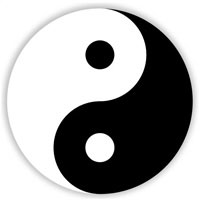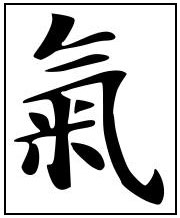Taoism Taoism is based on a philosophical concept of establishing harmony with the Tao – the mechanism of everything that exists. ‘Tao’ translates to the “way” or “path”. It also means “nature” as in the nature of all things as well as the natural world. The Three Jewels of the Tao are: Taoist focus on nature, relationship between humanity and the cosmos, health and longevity and wu wei (action through inaction). They have a reverence for ancestor spirits and immortals. Taoism has a historical relation to Chinese alchemy, astrology, Zen Buddhism, martial arts, medicine, feng shui and qigong. Organized Taoism acknowledges its contemporary activity from that of folk religion. The ‘Tao Te Ching’ is widely regarded to be the most influential Taoist text, meaning "The Classic of the Way and Its Power or Virtue". Its author is known to be Laozi dating back to the late 4th-century. The opening line of the ‘Tao Te Ching’ appears
as a paradox: “The Tao to be told is not the eternal Tao” or “The Way that can be described is not the true
Way.” The paradoxical intent is to prepare the reader for teachings about the unteachable Tao. Tao is
believed to be transcendent, indistinct and without form. In Asian philosophy, the concept of Yin Yang illustrates how complementary opposites interact within a dynamic whole and how they give rise to each other. Many natural dualities are thought of as manifestations of Yin and Yang: Dark-Light, Feminine-Male, Low-High, Cold-Hot, Air-Earth, Water-Fire. Naïve Western perception of Yin and Yang leans to the idea that it corresponds to evil and good. The Taoist avoids this good-bad distinction or moral judgment in preference to the idea of balance or harmony. What is
Qi? Central to Taoist world-view and practice is qi (also chi). Qi is “life-force”. That which animates the forms of the world. It is the vibratory nature of phenomena — the flow and tremoring that is happening continuously at molecular, atomic and sub-atomic levels. In Japan it is called “ki,” and in India, “prana” or “shakti.” The ancient Egyptians referred to it as “ka,” and the ancient Greeks as “pneuma.” For Native Americans it is the “Great Spirit” and for Christians, the “Holy Spirit.” In Africa it’s known as “ashe” and in Hawaii as “ha” or “mana.” In China, the understanding of qi is inherent in the very language. For instance: the literal translation of the Chinese character meaning “health” is “original qi.” The literal translation of the character for “vitality” is “high quality qi.” The literal translation of the character meaning “friendly” is “peaceful qi." z
|

